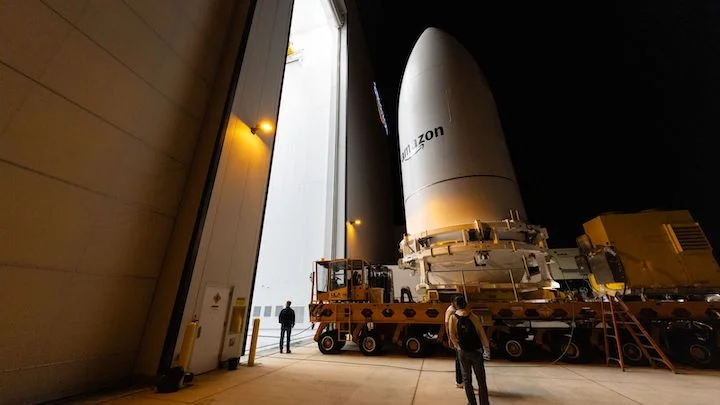
Starlink and Kuiper: The Space Race Bringing Broadband to Your Backyard
Forget distant planets, the new space race is about something far more immediate: your internet connection. Starlink, spearheaded by SpaceX, is going head-to-head with Amazon's Project Kuiper to deliver broadband from space, promising to revolutionize internet access, especially in underserved areas.
Starlink has a significant head start with over 7,000 satellites already in orbit, providing high-speed internet to over 125 countries. Imagine rural homes in Virginia suddenly accessing telehealth services or students attending online classes thanks to a simple rooftop dish.

Amazon's Kuiper is playing catch-up, planning to launch over 3,000 satellites in the coming years using rockets from Blue Origin, United Launch Alliance (ULA), and even SpaceX. The second batch of Kuiper satellites is targeted for launch on June 13, onboard a ULA Atlas V rocket.

The impact of these satellite internet services is already being felt. The Health Wagon, a mobile clinic in Appalachia, uses Starlink to connect patients with remote doctors. During emergencies, like Hurricane Helene, Starlink kept critical information flowing when traditional systems failed.
SpaceX is even collaborating with phone companies to provide satellite service directly to cellphones, eliminating the need for a dish. Imagine hiking in remote areas and still being able to send a text or make a call – a potential lifesaver for many.
Project Kuiper envisions more than just fast internet. Amazon aims to integrate its system with services like Prime Video and Amazon Web Services, potentially allowing users to stream movies from remote locations or run cloud-based software without relying on ground-based networks. They are even exploring integrating AI and cloud computing directly into the satellites, to create flying data centers.

While Starlink focuses on rural broadband and global cellular service, Kuiper aims to merge entertainment, business, and big data. Despite their different approaches, both share the same goal: leveraging space to improve life on Earth.
The skies are becoming increasingly crowded with satellite constellations from OneWeb, China, the European Union, and the U.S. military. However, this increased activity signals a positive shift – a commitment to bridging the digital divide and ensuring equitable access to the internet.
This isn't just about technology; it's about the student attending class from a remote mountaintop, the farmer accessing weather data in the field, and the nurse consulting with a specialist via video call. It’s about equity, opportunity, and connection.
So, what do you think? Will satellite internet finally close the digital divide? Share your thoughts and experiences in the comments below!